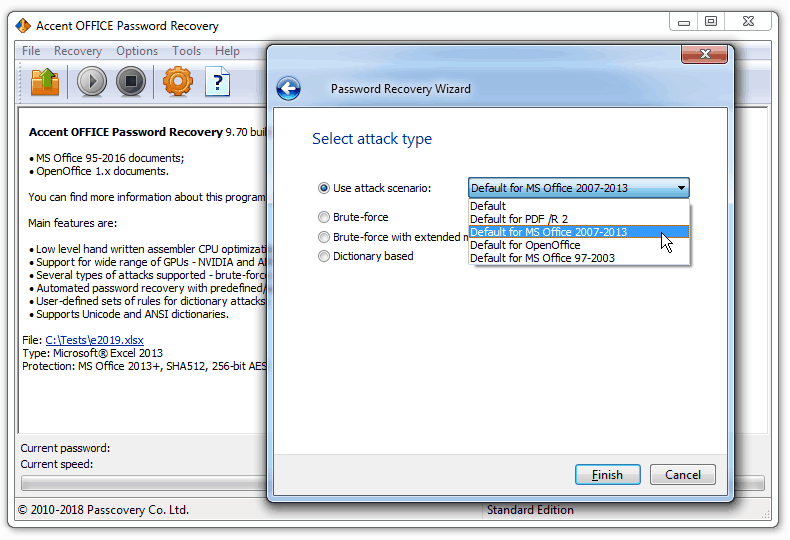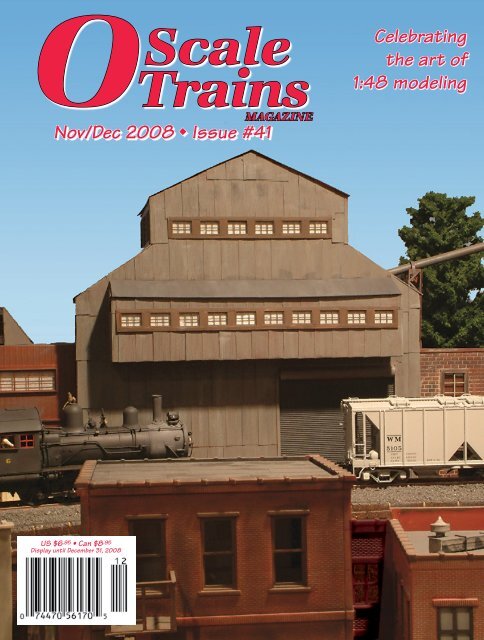- Woodexpress Serial Season 1
- Woodexpress Serial Season 2
- Woodexpress Serial Season 3
- Woodexpress Serial Season 2
- Woodexpress Serial Season 4
As the 12th installment of Serial downloads on millions of phones Thursday morning, a common question will reverberate through curious minds: Did he do it? Did Adnan Syed kill Hae Min Lee on that January day back in 1999? Of course, for steadfast listeners of Sarah Koenig’s immensely popular This American Life spinoff, the more relevant question is whether Koenig herself will tell us whether she thinks he did it. In the moments before this final revelation — or, as the case may be, lack thereof — here are the most important clues from the first 11 episodes:
Adnan’s defense attorney may have botched the case. Koenig raises some serious questions about the competence of Adnan’s attorney, Cristina Gutierrez. It’s not clear why she never reached out to Asia McClain, whose memory of speaking to Syed at the library on the afternoon of Hae’s disappearance could have offered a crucial alibi. It’s not clear where the $10,000 she requested from Adnan’s family went, although we do know that the Attorney Grievance Commission of Maryland paid out more than $200,000 to other clients who claimed she had misused their money. In an interview with TIME, Koenig asserted that what Gutierrez offered Adnan was certainly “flawed counsel,” but she’s not convinced that the lawyer intentionally threw the case.
Woodworker Express Your Most Reliable Supplier for All Your Woodworking Needs. We have a large selection of woodworking, cabinet, and furniture tools and supplies to meet the needs of all businesses building and repairing furniture and cabinets, trade professionals, homeowners, and Do-It-Yourself (DIY) weekend warriors. Every episode in Series 1 was based on a story by the Rev. Awdry, with the exception of an episode written by the staff, Thomas' Christmas Party, the book based on said episode being commissioned by the staff so as to have every episode in print form first. Woodexpress serial season 7. Serial is an investigative journalism podcast hosted by Sarah Koenig, narrating a nonfiction story over multiple episodes.The series was co-created and is co-produced by Koenig and Julie Snyder and developed by This American Life; as of July 2020 it is owned by the New York Times.Season one investigated the 1999 murder of Hae Min Lee (Hangul: 이해민), an 18-year-old student at Woodlawn.
Those who knew Adnan offer mixed accounts of his character. By many accounts, Adnan was a kind and conscientious teenager respected by peers and within his Muslim community. The impression that Adnan didn’t have it in him to commit a murder is what led family friend Rabia Chaudry to approach Koenig in the first place. Though it appears he put on one face for his strict, religious parents and another for his teenaged friends, there is nothing inherently sinister in this attempt to navigate two worlds. Some sources, however, dispute this characterization and point to darker clues. In the most recent episode, Koenig reveals that Adnan used to steal money from his mosque, although he maintains that it was a regrettable mistake unrelated to his capacity to commit a heinous crime. A teacher said Adnan’s poetry showed a “dark side,” but it’s not clear whether the darkness she interpreted reflects typical teenage brooding or something deeper.
Adnan’s conviction is based almost entirely on the testimony of a former friend named Jay. Koenig spends much time dissecting Jay’s testimony and his trustworthiness as a witness. Jay claims to have helped Adnan bury Hae’s body. His cooperation with detectives is directly linked to his guilty plea to accessory to murder, in exchange for which he served no jail time. His story changes several times, and three hours of his interview with the police were not recorded. Perhaps most damning, Koenig finds that the prosecuting attorney recommended an attorney to represent him pro bono — a major conflict of interest that might have made Jay feel additional pressure to appease the prosecution. To some of the jurors Koenig interviewed, Jay was streetwise and credible. To many of his former classmates, he was an enigma, difficult to pin down and even harder to read.
The cell phone records the prosecution used leave much to be desired. The prosecution used cell phone records from the day of Hae’s disappearance to try to corroborate Jay’s story. But out of 14 pings to different cell towers, the prosecution only cited four, because those were the only four that matched Jay’s account. The pings that conflicted with his account were swept aside. When Koenig and another reporter attempted to retrace Adnan and Jay’s steps according to the cell tower timeline, they found that the timing possible, but dubious. To add to the phone-related mystery, a classmate of Adnan’s named Laura, who used to shoplift from the Best Buy from which Adnan allegedly called Jay after killing Hae, said that Adnan couldn’t have called Jay from the Best Buy payphone because it didn’t actually have a payphone.
We have yet to hear a probable alternative to who else might have committed the murder. In an earlier episode, Koenig explores the story of Mr. S., a school maintenance worker who discovered Hae’s body in Leakin Park. Though Mr. S. had a record of streaking, and his having randomly stumbled upon Hae’s body is somewhat difficult to believe given how well hidden it was, Koenig ultimately dismisses the likelihood that he had anything to do with the murder. Koenig raises the possibility that Jay or Hae’s new boyfriend Don might have played a greater role, but nothing seems to warrant a deeper investigation. Exonerating Adnan, of course, does not require identifying a more plausible killer. But it would certainly help his case.
Koenig’s investigation has been so thorough that Adnan’s brother Yusuf believes “she’s doing a better job investigating than the police did.” Despite the troves of evidence she’s pored over, the experts she’s consulted and even the Innocence Project she enlisted to review the case, it remains unclear whether it’s enough to sway Koenig — and her listeners — to a definitive stance on the whodunit. As she told TIME in October, “I am hopeful that I will figure it out one way or the other … I may have to give that up along the way, but today, I’m hopeful.” In the meantime, Adnan eagerly awaits an end to the rehashing the podcast has foisted upon him, and fans await details on season two.
Get The Brief. Sign up to receive the top stories you need to know right now.
Thank you!
For your security, we've sent a confirmation email to the address you entered. Click the link to confirm your subscription and begin receiving our newsletters. If you don't get the confirmation within 10 minutes, please check your spam folder.In this article, we’re going to explain everything about seasoned wood. You have probably heard the term “seasoned wood”. If you’re exploring best firewood options for your indoor fireplace or wood stove, then you have probably heard strange stories about seasoned firewood. Everything you need to know about seasoned wood is here.
- What is seasoned wood?
- How to tell if the wood is seasoned?
- What are different ways of seasoning wood?
We will also talk about drying woods and how to season firewood.
What exactly is seasoned firewood? Stay with us.
Moisture of Wood

Wood is a hygroscopic substance, meaning it is a material that absorbs water from its surroundings.
See what is wood made of?
In the definition of wood moisture, it should be said: The moisture content of wood means the relationship between the mass of water in it and the mass of the dry wood (wood without the water).
For example, if a piece of wood weighing 2kg contains 1kg of water, the moisture percentage of wood is then 100%. The greenwood starts to dry automatically after cut to reach the equilibrium moisture content. The equilibrium moisture content of wood is a state depended on the relative air moisture, in which the moisture content of the wood remains steady.
Lichtenberg Wood Burning eBook
Download Lichtenberg Wood Burning eBook
One of the modern techniques for creating wooden artwork is called Lichtenberg wood Burning. In this eBook, we are going to introduce this newfound art to you.
This technique is known with some different names such as Lichtenberg wood burning, fractal wood burning, and electricity wood art.
This technique should not be confused with wood burning art or pyrography. The art of pyrography on wood is the art of creating motifs and designs by burning with hot metal tools on objects such as wooden surfaces.
Lichtenberg burning is a wood-burning technique for creating designs with electricity.
This eBook is a comprehensive guide on Lichtenberg Wood Burning. All you need to know for Lichtenberg Wood Burning is here.
This is a limited-time offer, order now to get access to the future eBook releases.
When wood is used as a construction material in woodworking projects, the moisture of wood should be between 20% and 25% depending on the humidity of the air.
Woodexpress Serial Season 1
What is Seasoned Wood?
The seasoned wood definition is simple. We saying that wood has been seasoned when it has been left out to dry for a long period of time and the moisture from the wood’s cells have evaporated completely.
The word “completely” is the key to this definition. You can find dried branches of a tree in your garden. These woods are seemingly dry but still have a lot of moisture or sap. They are not completely dry.
Seasoned wood is the opposite of Greenwood. The Greenwood has been freshly cut and its internal moisture is at its maximum. Seasoned wood is also distinguished from kiln-dried wood which has had the moisture removed quickly through a kiln.
Properly seasoned wood should have a moisture content below 20 percent. This amount of moisture is very important when you want to use it as firewood. Firewood with moisture higher than 20 percent may eventually burn, but it is hard to start and keep burning, In addition, it produces a lot of smoke.
Woodexpress Serial Season 2
Seasoning Process
Seasoning is the process of reducing and eliminate the moisture content from wood before using. It also is known as the wood drying process or wood seasoning.
This process is done to minimize problems when used in woodworking to provide wood warping or to provide less smoke and more uniform combustion when used as firewood. Seasoning process actually turns greenwood into dry wood.

The length of the process depends on the wood types used along with relative humidity in the area where the wood is seasoned.
When the drying is done in a kiln, the product is known as kiln-dried timber, whereas air drying is the more traditional method.
Methods of Drying Wood
Air Seasoning
The air seasoning or outdoor wood drying is one of the oldest ways of removing the moisture content of the wood. This way is actually a traditional method and takes six to nine months. Of course, the time required for complete drying of the wood boards depends on the following factors:
- Species of wood
- The initial moisture content
- The thickness of the boards
- The environmental conditions
The air seasoning method is the simplest and cheapest method of drying wood, but achieving the excellent result in this way is very time-consuming.
Kiln Seasoning
The most common and effective commercial process for produce seasoned wood is kiln seasoning method. Drying in the kiln has advantages like high-speed drying and removing bacteria inside the wood.
In a progressive kiln, timber enters at one end and travels on through chambers with special temperature conditions to dry the wood completely. Kiln-dried wood is really dry.
This method ensures that the moisture content of the wood is below 20%. Therefore, this method is more suitable for producing seasoned firewood than air seasoning.
In air seasoning method, the moisture level will almost always be higher than kiln-dried firewood. One of the disadvantages of this method is the high cost of providing energy to heat.
SolarKiln Seasoning
If you do not have enough money for the costs of energy, you can use solar Kiln. This is a combination of the two methods above.
In this method, the heat of the sun is used to heat up Kiln. Some solar kilns have insulation to retain heat at night that there isn’t the sunlight. This process takes approximately twice longer than the method of kiln seasoning.
Features of Seasoned Wood
Woodexpress Serial Season 3
How to tell when the wood is seasoned? Here are some points that you can identify seasoned wood with the help of them. These include the appearance and trait of seasoned wood. If you want to use wood as firewood, knowing these will help you because burning greenwood can be dangerous. It creates a lot of smoke, creosote and will be hard to start the fire.
Woodexpress Serial Season 2
Color
In most cases, greenwood has refreshing colors, and with the loss of moisture will opaque over time. Seasoned wood usually develops a faded gray color, after losing moisture. In the picture below, you can see the difference between greenwood and seasoned wood.
Cracking
In addition to color, deep cracks are another sign of seasoned wood. You may see cracks on dry pieces of seasoned wood which extends from the center of the log and reaches out towards the edges. But this is not a determining factor.

Woodexpress Serial Season 4
Some seasoned logs may not have a crack and some cracked logs may still be too green. However, this can help you identify dry wood.
Weight
Seasoned wood loses its moisture content and becomes very lighter than greenwood. Some types of wood like softwoods have a very high moisture content, so the weight difference will be more noticeable than other wood types.
Sound
You can even listen to the sound of wood and identify seasoned wood. It will introduce himself.
Wet wood produces a dull thud sound when hit another piece and seasoned wood will make a hollow sound when two pieces hit together. Of course, this way requires a bit of experience.
Moisture Meter
If you’re still not sure wood is dry enough to use as seasoned firewood, you can buy a moisture meter to test the wood. Usually, Hardware stores and woodworking suppliers sell this device. When the device connects into the wood, your meter’s reading number should be below 20 percent. Moisture between 10 and 20 percent is ideal.
Best Seasoned Firewood
If you are planning to buy firewood for your fireplace, your question is probably what is the best firewood for fireplaces?
The answer to this question depends on the type of wood and the quality of drying wood.
Dense hardwoods like maple wood, Oakwood and walnut wood have a higher energy content per cord.

So firewood made of these types of wood can release more heat per firebox load. Also unlike softwoods like birch wood, pinewood, spruce wood, and poplar wood, they can produce coal bed.

See is pine good firewood.
Softwoods are less dense, burn faster and do not produce a long-lasting fire.
An exception is always there, see also white pine firewood as a good choice.